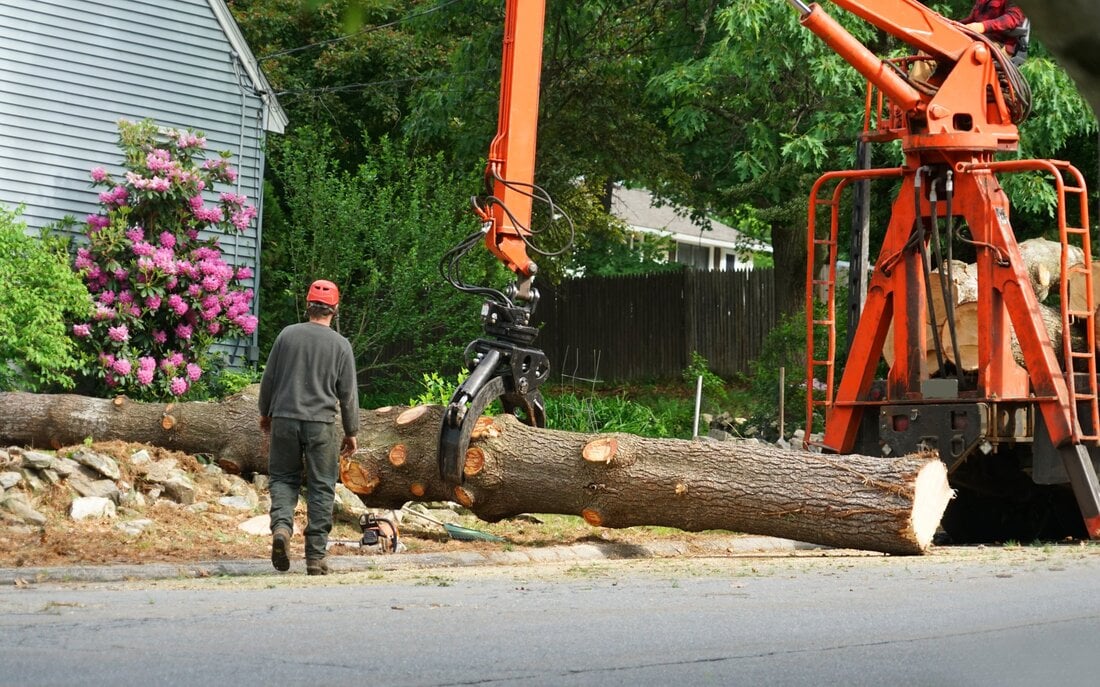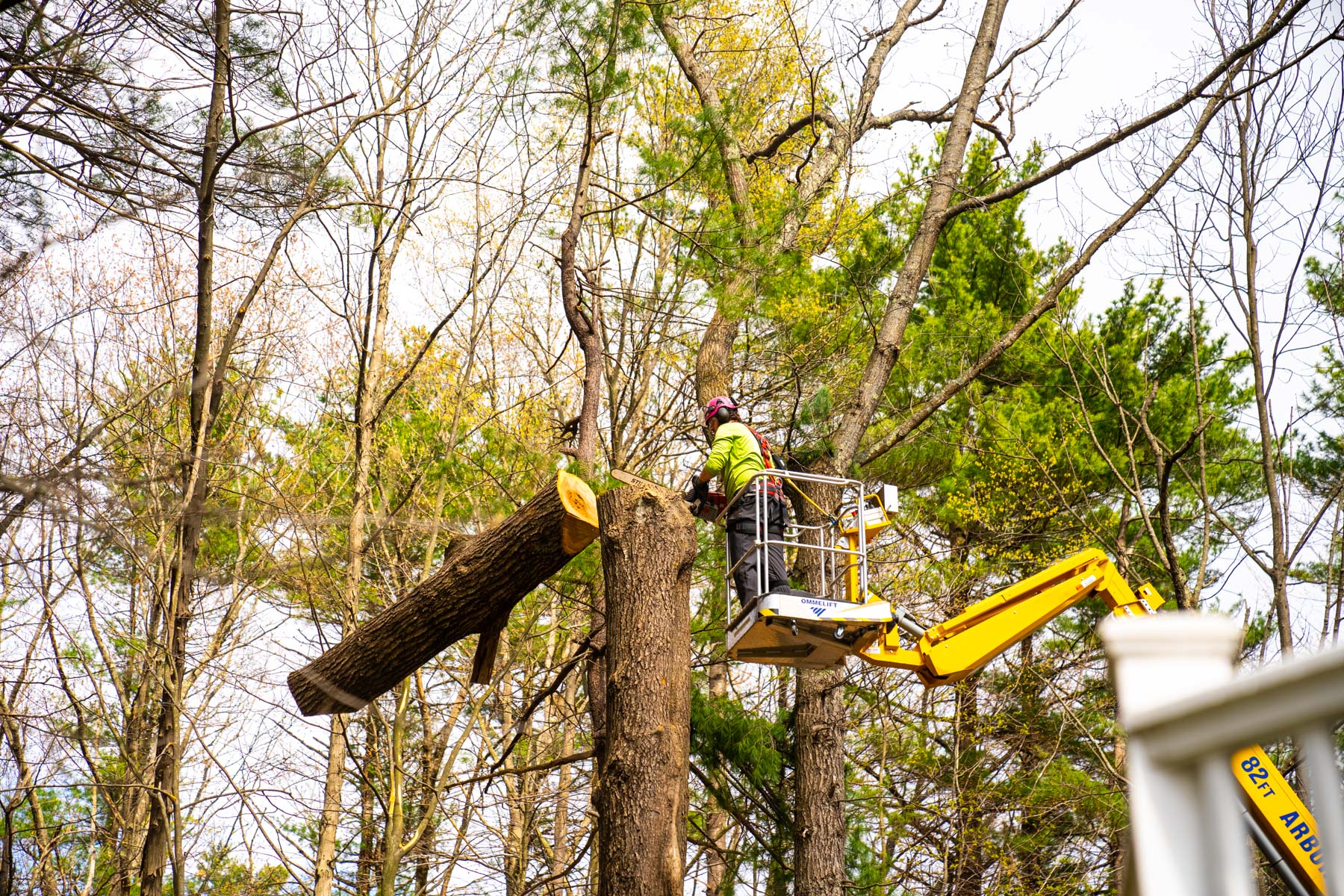Lush green trees enhance the beauty and air quality of any landscape. They also provide a home for natural wildlife in the area. However, dead and decaying trees can often become a nuisance.
They invite pests, rodents, and other disease-spreading organisms into your yard. Structurally damaged trees also pose a threat to your property. Therefore, it is safer to remove them as early as possible.
Here we give you a quick steps on how to remove dead trees from your property. If you'd like more in-depth information, read our Ultimate Guide to Tree Removal.
Before you can start DIY tree removal, gather the right supplies for the job. The safety gear should include heavy gloves, boots, a hard hat, ear protection, ropes, and safety goggles. To cut the tree, get a chainsaw with a bar at least as long as the tree’s diameter. Use a tree-felling wedge in case the tree proves challenging to bring down.Step #2: Clear the Area
The first thing you need to do is to clear the area surrounding the tree. If the tree is already leaning in a particular direction, it will fall on that side. To estimate the space that needs clearing, draw a circle around it using the tree’s length as the radius.
Step #3: Secure Dangerous Branches
If your tree has several heavy branches, it may fall during the removal process and cause injuries. The best way to secure them is by tying them to the trunk with a sturdy rope.
Step #4: Create a v-shaped Notch
- Gear up with all the safety equipment before you get started with tree removal.
- Use the chainsaw to create a V-shaped notch on the side you feel is the safest direction for it to fall.
- Use a chainsaw to make a diagonal cut into the tree up to its half girth.
- Ensure that the cut is only one-quarter to one-third of the tree’s diameter.
- Make a similar cut on the other side to form a V-shaped notch.
- Remove the wooden wedge from the notch.
Step# 5: Make the Back Cut
A back cut acts as a linchpin that plays a crucial role in the tree-felling process. Make it on the opposite side of the V-notch, slightly above the apex of the notch. Follow this by making a horizontal cut into the trunk at least 8 inches deep. The larger trees topple quickly, while smaller ones may need a push.
Step# 6: Chop away the Stump and Remove the Roots
Once the tree falls, remove the remaining stump by chopping it off with an ax. Continue chopping until the whole stump has flattened. Dig up nearby soil to cut off and pull out the roots. Leaving the roots in the ground can invite pests and termites into your yard.
About Seacoast Tree Care
If you are looking for certified arborists to take care of your tree-removal, Seacoast Tree Care is your one-stop destination. We offer a complete range of tree removal and tree care services in New Hampshire, Maine, and Massachusetts. We are experts in tree pruning, cabling, fertilizing, preservation, pest control, and root collar excavation. You can trust our university-trained arborists to keep your garden healthy and thriving. Call us at 603-431-0101 or 978-225-6644, or email us at info@seacoasttreecare.com to know more.


